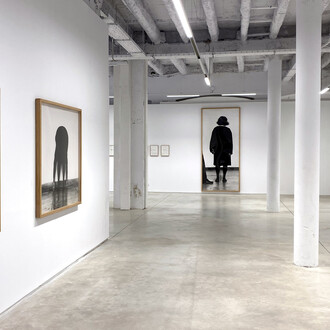In his second solo exhibition in Barcelona, Iván Argote presents at ADN Galeria La puesta en marcha de un sistema (Setting up a system), where the empirical and the speculative intertwine in order to build relationship systems within a sphere in which Argote appropriates, analyses, recycles and deconstructs ideological and historical filters.
Focusing on a series of specific cases that revolve around the global and the everyday, the Colombian artist develops a work that draws on the deconstructive method to question, in line with Derrida’s thinking, the authority of images and language and to affirm the need for memory. Hence the constant reference to personal experiences, everyday gestures, political fantasies, facts and actions, which creates a complex system of interactions between the contemporary and the inherited structures of the past; a system sometimes full of ritual and collective habits. Iván Argote dialogues with History through a subversive updating of its ideological symbols.
In Lo que nos sobra (2015), the artist’s erosive action transforms a classical-style statue representing a lion, associated in the Western tradition with nobility and power, into an amorphous object, robbing it of its significance. The identifying traits of a status quo are turned into dust, leaving a tabula rasa on which to write a new history tired of hegemonic ideologies.
The project that bears the exhibition’s title, La puesta en marcha de un sistema (2015), consists of a series of compositions which assemble documents, photographs and gelatine silver prints belonging to the artist's personal archive.
Propaganda images from different periods and countries are interwoven with pages from photography books, political slogans, portraits and geometric shapes, creating a three-dimensional assembly and generating new associations and layers of reading the very history that they contain.
Thus, as also happens in the illuminated panels which connect the exhibition space, the project imposes a return to the idea of deconstructing in order to rebuild; of questioning History, undoing it and rewriting it; of paying attention to certain information and its nuances; of looking through new filters and meanings and of working with different forms and techniques. Ultimately, these are projects with feedback loops that create a network where symbols, images and information display multiple readings.
Iván Argote’s actions escape their everyday stage to contaminate other spheres. This happens in Reddish Blue (2015), a project inspired by an old, damaged photograph from the 1970s which shows Argote’s father teaching children how to become good activists. This project reveals a historical anecdote with a rich ideological background: Iván Argote finds out that in the late 1960s the Eastman Kodak company realized that color photographs turned reddish as they aged and, in the context of Cold War, the company feared that the archives of the United States would end up over time completely red, the emblematic color of the Soviet bloc. For this reason, the company decided to change the Kodak chrome method and created a new developing system, Ektachrome, in which pictures tend to turn blue as they age. This story is narrated through a text projected from slides, in a space painted violet, a mix of blue and red.
The same photograph of the father in the 1970s is also the starting point of the Activissime – Thessaloniki (2015) project, which Argote has developed at different times and in different places, based on workshops with primary-school children where the artist encourages them to create their own protest slogans, emulating the activity of his father three decades earlier. Argote held the first workshop in 2011, commissioned by the MAC/VAL Museum in France; the second in 2014 in Sala Muncunill – Espai Dos inTerrassa; and the third in 2015 in Greece, within the context of the Thessaloniki Biennial. The resulting video of the workshop in Greece closes the exhibition at ADN Gallery.
The exhibition space is conceived as a narrative system in which objects, collages, films and archive materials are reactivated and provide us with new stories. The scenography presented by Ivan Argote blends visual and historical filters and displays images that reflect on the relationship of human beings with art, philosophy and politics. Following Jacques Rancière in Le Destin des Images, "Art is alive whenever it is outside itself, forming 'scenes of distortion.’”
Text by Olga Sureda



















